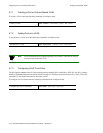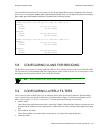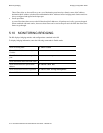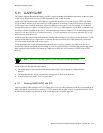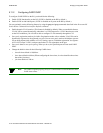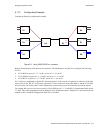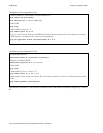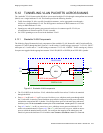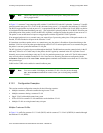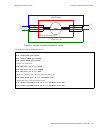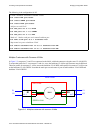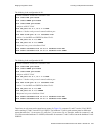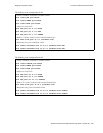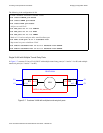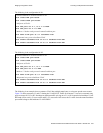
5-20 Riverstone Networks RS Switch Router User Guide Release 8.0
Tunneling VLAN packets across MANs Bridging Configuration Guide
Note
Tunnel entry and exit port are configured as access ports. These ports can receive
802.1q-tagged traffic.
In Figure 5-3, customer C1 tags outgoing traffic with the VLAN ID BLUE in the 802.1q headers. Customer C1’s traffic
enters the tunnel entry port et.2.1 on R1. On R1, the tunnel entry port et.2.1 is mapped to the backbone VLAN RED.
The BLUE-tagged packet received on port et.2.1 is encapsulated with an 802.1q header with VLAN RED’s tag before
it is bridged out on the tunnel backbone port et.4.1. (The original 802.1q header with the VLAN BLUE ID is now part
of the data portion of the packet.) On R2, the RED 802.1q header is stripped off before the packet is sent out on et.6.1.
The packet is sent out the tunnel exit port as a tagged packet with the original BLUE 802.1q header.
If an untagged packet arrives on a tunnel entry port, normal layer 2 processing takes place. If the packet needs to be
flooded, it will be flooded on all ports in the customer VLAN.
If a broadcast or multicast packet arrives on a tunnel entry port, the packet is flooded on all ports that belong to the
backbone VLAN as well as any other ports that belong to that VLAN. If a unicast packet arrives on a tunnel entry port,
the packet is sent out a particular backbone VLAN port.
The 802.1p priority of a packet is preserved throughout the MAN. The RS hardware uses the control priority in the L2
table entry. If there is no L2 table entry for the packet, the 802.1p priority contained in the 802.1q header is used.
Normally, access ports can belong to only one VLAN of a particular protocol type, such as IP. The RS allows tunnel
entry and exit ports to be added to multiple VLANs. Note, however, that only ports that are configured with the
stackable-vlan
option of the
vlan make access-port
command can be added to more than one VLAN of the
same protocol type.
GARP and/or GVRP can be enabled on tunnel backbone ports.
Note
You cannot enable L4 bridging on stackable VLANs. Also, do not use the
stp
set vlan-disable
command on routers where you are configuring stackable
VLANs.
5.12.2 Configuration Examples
This section contains configuration examples for the following scenarios:
•
Multiple customers, with each customer having its own VLAN
•
Multiple customers sharing a common VLAN
•
Single VLAN with multiple tunnel entry ports
•
STP or GVRP in customer VLANs tunneled over the backbone VLAN
•
Multiple VLANs on a single tunnel entry/exit port
Multiple Customer VLANs
In Figure 5-4, traffic for customer C1’s VLAN (BLUE) and for customer C2’s VLAN (GREEN) is tunneled through
the backbone VLAN (RED).



